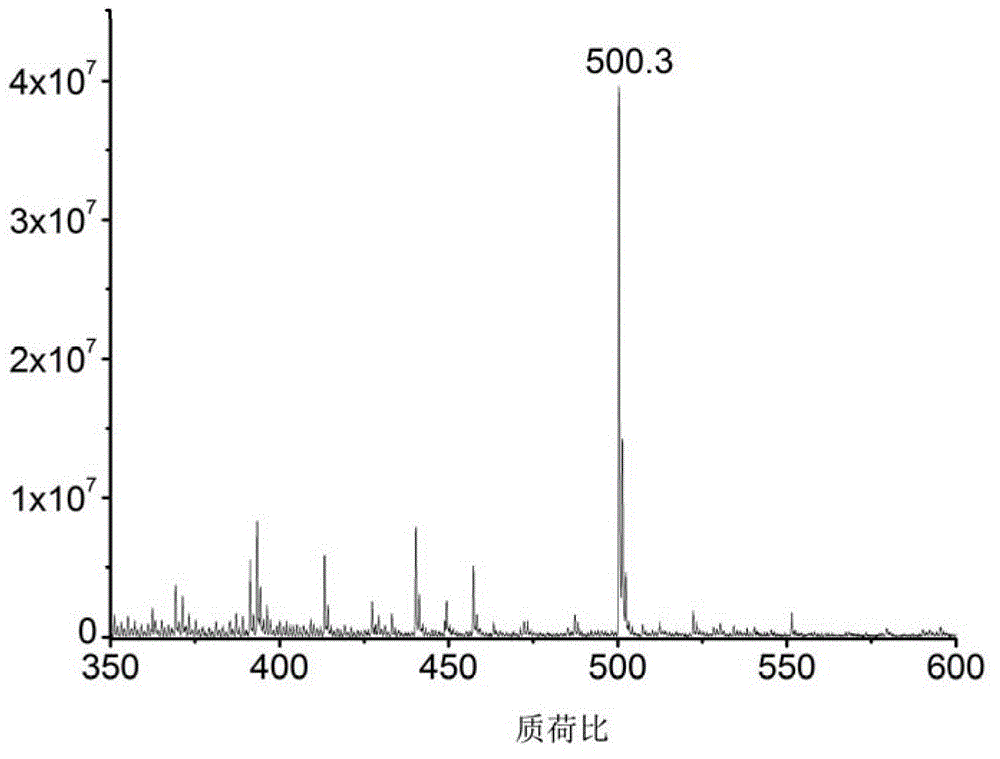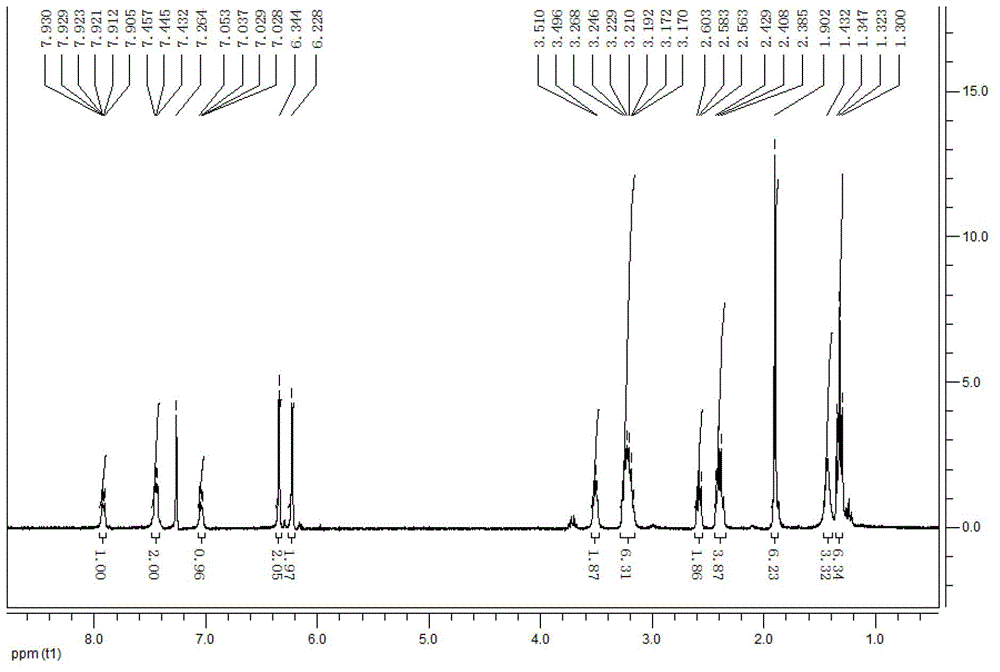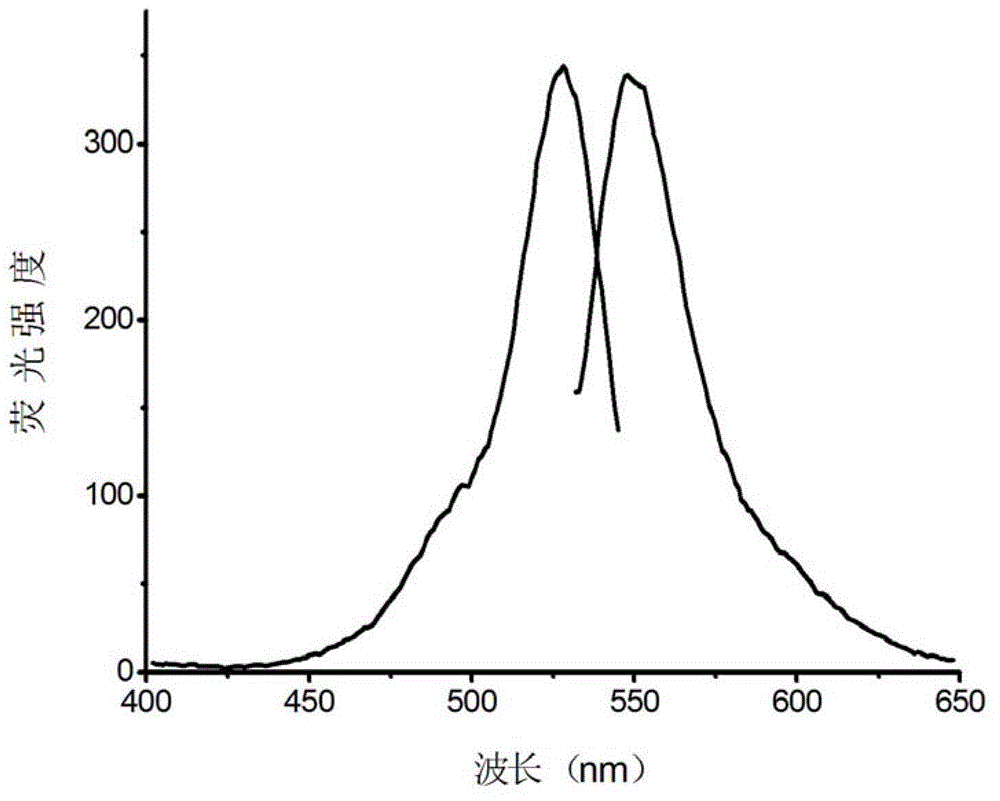Selenium ion fluorescent probe, and preparation method and application thereof
A fluorescent probe and ion technology, applied in the field of environmental analysis, can solve problems such as analyte loss, long pH color development time, pollution, etc., and achieve the effect of low cost, easy availability of raw materials, and good selectivity
- Summary
- Abstract
- Description
- Claims
- Application Information
AI Technical Summary
Problems solved by technology
Method used
Image
Examples
Embodiment 1
[0030] Example 1 Preparation of selenium ion fluorescent probe.
[0031]Weigh 1.916g (4.0mmol) of Rhodamine 6G and dissolve it in 20mL of hot ethanol solution, add 3mL (28mmol) of diethylenetriamine, and heat to reflux until the green fluorescence of the solution disappears. After evaporating part of the ethanol, add pure water while sonicating, and a light pink solid is formed. When the amount of solid precipitation no longer increases, stop adding pure water. Then perform suction filtration and wash with water 2 to 3 times. Dissolve the light pink solid obtained by suction filtration in acetonitrile, remove water with anhydrous sodium sulfate, heat and filter, and perform rotary evaporation on the filtrate to obtain a light pink solid, which is the bottom ring modified derivative of Rhodamine 6G, with a yield of about 76 %.
[0032] The characterization of the bottom ring-modified derivative of the product rhodamine 6G, the mass spectrum is shown in figure 1 , see NMR ...
Embodiment 2
[0033] Embodiment 2 Measurement of fluorescence properties of selenium ion fluorescent probe
[0034] The Se fluorescent probe prepared in Example 1 was dissolved in absolute ethanol to prepare a 10 mmol / L stock solution. Take 30 L from the stock solution and add it to a 5 mL centrifuge tube, add 30 L selenium standard solution (100 μmol / L) and dilute it to 3 mL with HEPES buffer solution (0.1 mol / L, pH=7.5), and measure its fluorescence properties. Fluorescence spectra such as image 3 shown. Depend on image 3 It can be seen that the fluorescence maximum excitation wavelength of the selenium fluorescent probe is 530nm, and the maximum emission wavelength is 550nm.
Embodiment 3
[0035] Example 3 Before and after the selenium ion fluorescent probe is mixed with selenium, the fluorescence intensity at the maximum emission wavelength of the fluorescent probe changes with time.
[0036] a. Take 30 L from the fluorescent probe stock solution in Example 2 and add it to a 5 mL centrifuge tube, add HEPES buffer solution (0.1mol / L, pH=7.5) to dilute to 3 mL, and detect the fluorescent probe at the maximum fluorescence emission wavelength. The change of needle fluorescence intensity with time.
[0037] b. Take 30 L from the fluorescent probe stock solution in Example 2 and add it to a 5mL centrifuge tube, add 30 L selenium standard solution (100 μmol / L) and dilute it with HEPES buffer solution (0.1mol / L, pH=7.5) To 3mL, detect the change of the fluorescence intensity of the fluorescent probe at the maximum fluorescence emission wavelength with time.
[0038] Such as Figure 4 As shown, the fluorescence intensity increases rapidly within 30 minutes of mixing t...
PUM
 Login to View More
Login to View More Abstract
Description
Claims
Application Information
 Login to View More
Login to View More - R&D Engineer
- R&D Manager
- IP Professional
- Industry Leading Data Capabilities
- Powerful AI technology
- Patent DNA Extraction
Browse by: Latest US Patents, China's latest patents, Technical Efficacy Thesaurus, Application Domain, Technology Topic, Popular Technical Reports.
© 2024 PatSnap. All rights reserved.Legal|Privacy policy|Modern Slavery Act Transparency Statement|Sitemap|About US| Contact US: help@patsnap.com










